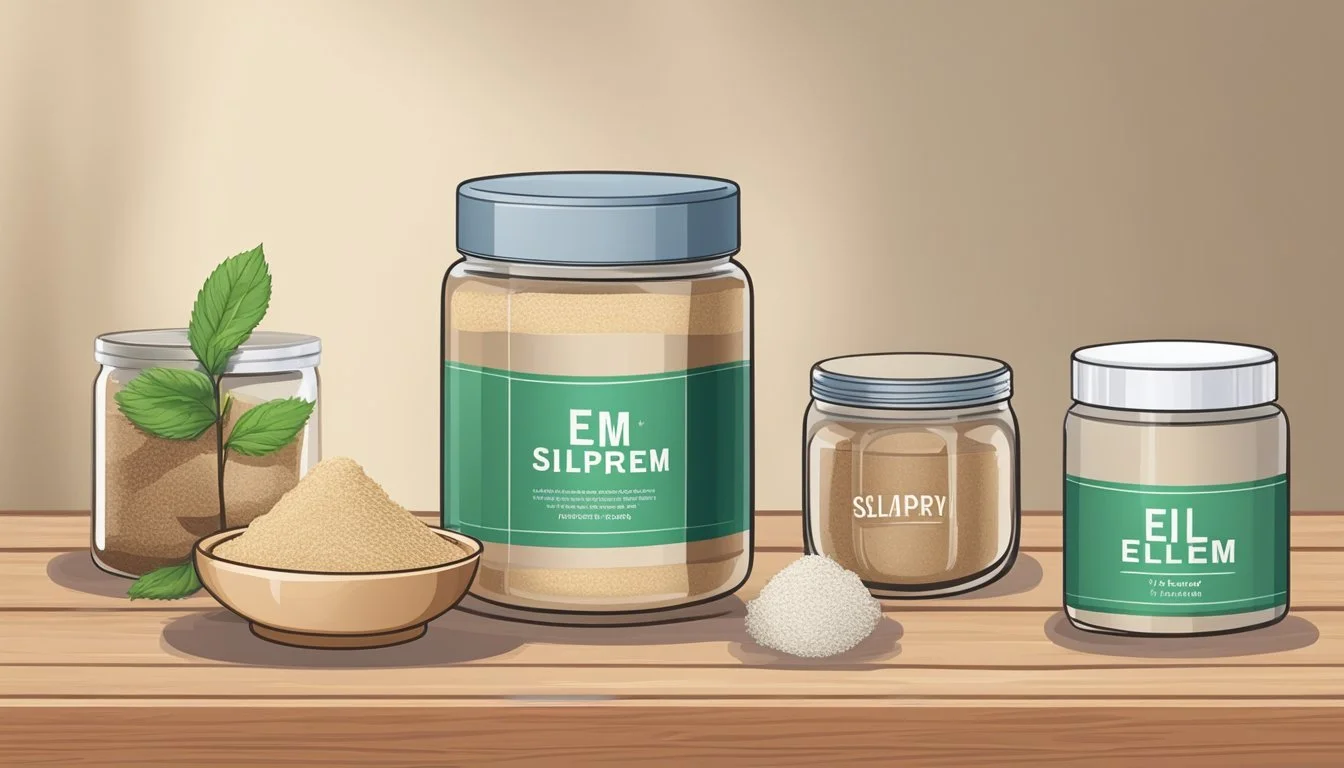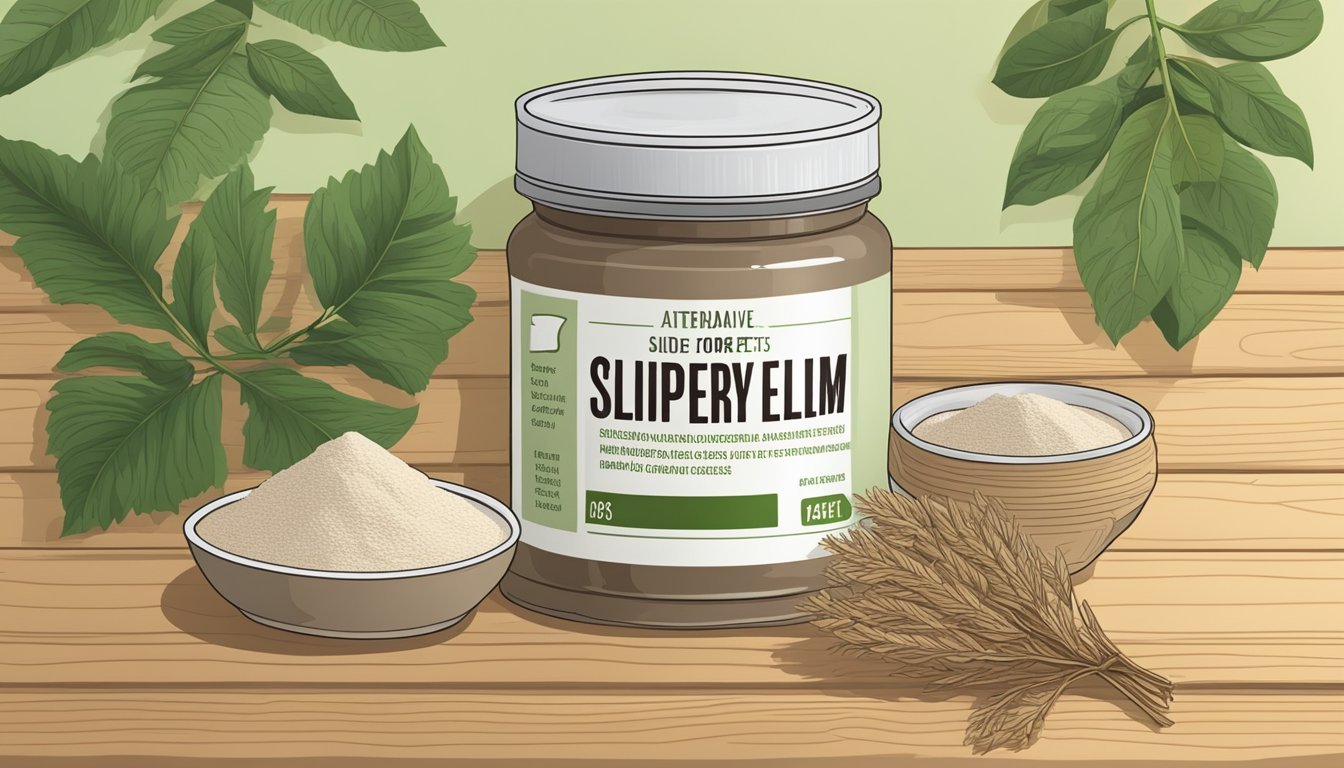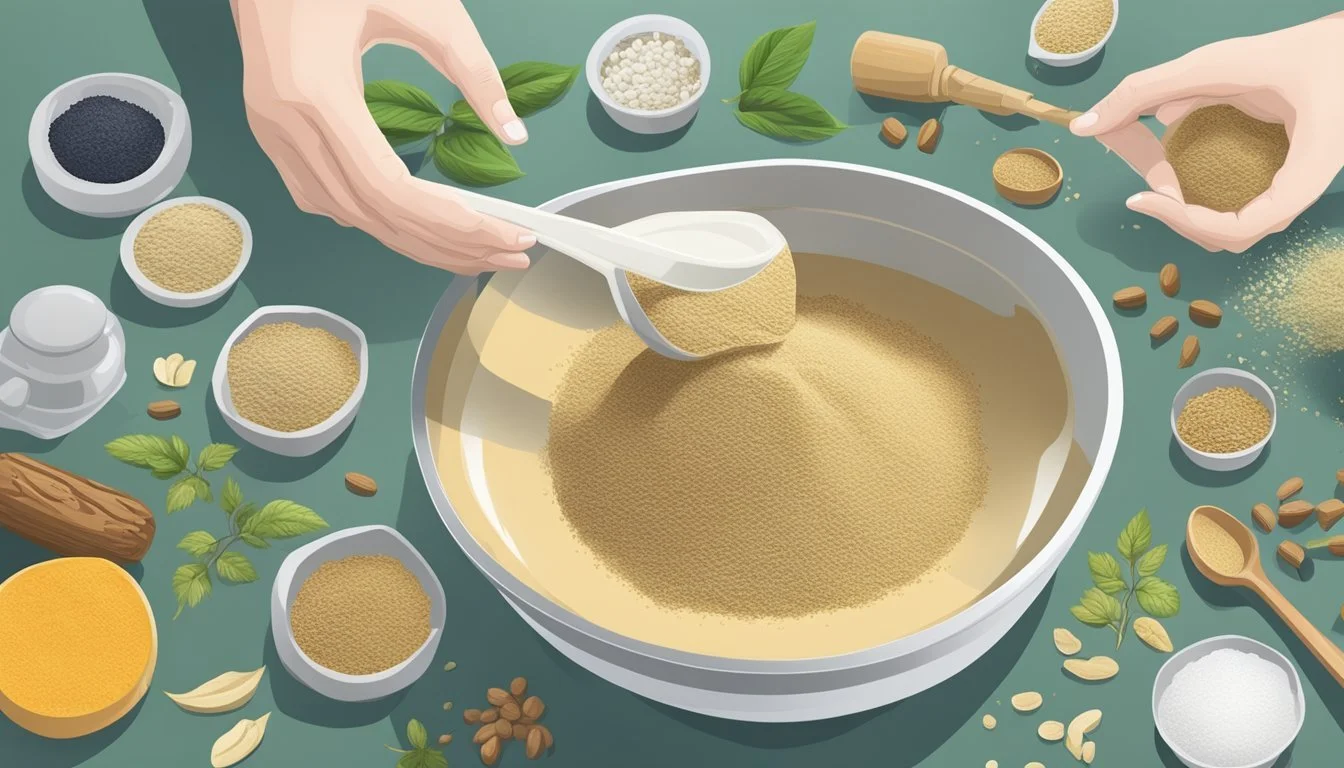Slippery Elm Powder Substitutes
Top Alternatives and Uses
For those seeking alternatives to slippery elm powder, several effective substitutes can provide similar benefits. Marshmallow root is a notable option, as its inner bark contains high levels of mucilage, which soothes irritated tissues. Marshmallow root can be used to calm inflammation in the digestive and respiratory tracts.
Another excellent alternative is licorice root. Known for its anti-inflammatory and immune-boosting properties, licorice root can be used to address conditions similar to those treated with slippery elm. It coats the throat and alleviates irritation, making it a suitable substitute.
Honey also serves as a natural remedy, especially for sore throats and coughs. Its antimicrobial properties, combined with a soothing effect, make it a versatile substitute for slippery elm. Incorporating these substitutes can provide effective relief while offering a range of health benefits.
Understanding Slippery Elm
Slippery elm, known scientifically as Ulmus rubra, is a tree native to North America. Its inner bark has been used traditionally for its mucilage content, treating various health issues like sore throats and digestive problems.
Botanical Profile
Ulmus rubra, commonly called slippery elm, thrives in the eastern regions of North America. This medium-sized tree features a reddish inner bark, which supplies the mucilage—a gel-like substance. The leaves are rough to the touch, with serrated edges and an asymmetrical base. The tree prefers moist, well-drained soils, often found in riverbanks and alongside other hardwood species.
Historical Uses
Slippery elm’s inner bark has been utilized extensively by Native Americans. It was often prepared as a gruel to nourish and soothe irritations in the digestive tract. They also fashioned poultices from the bark to treat wounds, boils, and ulcers. In traditional medicine, slippery elm was a common remedy for sore throats, coughs, and other respiratory ailments.
Properties and Health Benefits
The primary component of slippery elm is mucilage, which forms a soothing gel when mixed with water. This demulcent property makes it effective for calming irritated tissues, particularly in the digestive and respiratory systems. It also contains antioxidants that help combat inflammation. Additionally, the powdered inner bark is rich in fiber, promoting digestive health and regularity.
Common Uses of Slippery Elm
Slippery Elm has a variety of uses that range from soothing digestive issues to providing relief for respiratory conditions and aiding in skin care. It is valued for its natural properties that help treat ailments like sore throats, ulcers, and inflammation.
Digestive Health
Slippery Elm is widely used to help with various digestive issues. It can alleviate symptoms of irritable bowel syndrome (IBS), ulcerative colitis, and constipation. The mucilage content in slippery elm forms a gel-like substance when mixed with water, which coats and soothes the lining of the intestines.
It can also be beneficial in reducing bloating and treating esophagus issues. Its anti-inflammatory properties play a significant role in easing discomfort from ulcers and other inflammatory bowel conditions. People often take slippery elm in powder or capsule form to improve their overall digestive health.
Skin Care
In skin care, slippery elm is known for its ability to treat minor wounds and inflammation. Its soothing properties make it an effective natural remedy for bruises, burns, and wounds. When used topically, slippery elm can help in reducing swelling and redness in affected areas.
Beyond wound treatment, it can also be applied as a balm or salve to treat eczema and psoriasis, providing relief from itching and irritation. The antioxidants in slippery elm can aid in the skin's healing process, promoting faster recovery of damaged skin cells.
Respiratory Relief
Slippery Elm is commonly used to soothe sore throats and relieve symptoms of coughs and the flu. The mucilaginous quality of slippery elm helps coat the throat, reducing irritation and providing a calming effect.
It is often found in natural cough syrups and lozenges. Additionally, the herb can help reduce the** inflammation** in the respiratory tract, making it useful for those suffering from chronic respiratory conditions. Its natural properties make it a go-to remedy for traditional respiratory treatments.
Slippery Elm in Different Forms
Slippery elm is available in various forms, each offering unique benefits and practical applications. Understanding the differences can help users choose the most suitable form for their needs.
Tea and Powder
Slippery elm tea is a popular preparation made from the bark of the tree. The powdered bark can be mixed with hot water to create a soothing beverage that helps with digestive and respiratory issues. The mucilage in the powder coats and protects irritated tissues.
Usage:
Mix the powder with water to form a paste.
Add hot water to create tea.
Alternatively, use the paste topically for skin conditions.
Slippery elm powder and tea are valued for their versatility and ease of use.
Capsules and Tablets
Capsules and tablets offer a convenient way to consume slippery elm as a supplement. Each capsule typically contains a measured dose of the inner bark powder.
Advantages:
Convenience: Easy to take, especially for those with busy lifestyles.
Precise Dosage: Consistent and controlled intake.
Example:
Oregon Harvest Organic Slippery Elm Capsules provide 400mg per capsule, ensuring a reliable daily dosage.
These forms are suitable for those seeking simplicity and accuracy in their herbal remedies.
Lozenges and Other Preparations
Lozenges, extracts, and tinctures are additional forms of slippery elm. Lozenges are particularly useful for soothing sore throats and coughs.
Usage:
Lozenges dissolve in the mouth, providing targeted relief.
Extracts and tinctures can be mixed with water or taken directly for quick absorption.
These preparations offer targeted and convenient ways to benefit from slippery elm's healing properties.
Slippery Elm Alternatives
Various alternatives to slippery elm offer similar benefits for digestive and respiratory health conditions. These include other herbal remedies, specific nutritional adjuncts, and effective home remedies.
Herbal Substitutes
Marshmallow root is a popular alternative to slippery elm due to its similar mucilaginous properties. These properties create a soothing, gel-like substance when mixed with water, aiding in easing digestive and respiratory issues. Licorice root is another effective substitute, known for its anti-inflammatory and soothing effects on the stomach lining.
Triphala, a traditional Ayurvedic formulation, supports digestive health and acts as a mild laxative, making it a suitable alternative. Each of these herbs can be found in various forms such as powder, capsules, or teas, catering to different preferences and needs.
Nutritional Adjuncts
Nutritional substitutes include foods and supplements rich in fiber and prebiotics, essential for maintaining gut health. Oats and chia seeds are excellent choices due to their high soluble fiber content, which forms a gel-like substance to aid digestion. Psyllium husk is also effective as a bulking agent, promoting regular bowel movements.
For those needing a nutritional boost, supplements like inulin can serve as a prebiotic, nourishing beneficial gut bacteria. Probiotic supplements are another good adjunct, supporting a healthy gut microbiome by increasing the population of beneficial bacteria.
Home Remedies
Certain home remedies can replicate the soothing effects of slippery elm. Honey mixed with warm water provides relief for sore throats and can help ease digestive discomfort. Aloe vera juice, known for its anti-inflammatory properties, supports the digestive tract and soothes irritation.
Cinnamon, often combined with honey, can help improve digestion and offer gastric relief. Another effective home remedy includes a flaxseed poultice, which can be applied to the skin for boils and abscesses or consumed to support digestive health. These simple, accessible remedies use common household ingredients to provide comfort and relief.
Safety and Side Effects
Slippery elm powder, while beneficial, comes with certain potential risks and safety concerns. This section covers the most important information about its potential side effects, contraindications, interactions, and proper usage.
Potential Risks
Individuals taking slippery elm powder may experience some side effects. Common ones include nausea, diarrhea, and heartburn. Allergic reactions are also possible, especially for those who are sensitive to elm or its components. Signs of allergic reactions may include rash, itching, or swelling, particularly of the face or throat.
Pregnant or breastfeeding women should exercise caution. Although slippery elm has a long history of use, there is limited research on its safety during pregnancy and breastfeeding. It is prudent to consult a healthcare provider before using this supplement in such cases.
Contraindications and Interactions
Slippery elm may interact with certain medications. Its mucilage content can slow the absorption rate of some drugs, potentially diminishing their efficacy. It is advisable to take slippery elm at least two hours apart from other medications to prevent any interaction-related issues.
People with a history of inflammatory bowel disease (IBD) or irritable bowel syndrome (IBS) should consult their healthcare provider before using slippery elm. Despite its potential benefits for these conditions, individualized medical advice is crucial due to the variability in disease presentation and current treatments.
Proper Dosage and Use
The proper dosage of slippery elm powder varies depending on the individual's condition and age. Adults commonly use it in the form of tablets, capsules, or teas. A general guideline is to follow the dosage instructions provided on the product label or as directed by a healthcare professional.
For children, a lower dosage is typically recommended. It’s essential to ensure that the powdered form is adequately mixed in water to prevent choking.
To avoid side effects like heartburn or nausea, it is beneficial to start with a smaller dose and gradually increase it. Proper usage helps maximize the benefits while minimizing potential risks.
Consultation and Clinical Research
Understanding the importance of consulting healthcare professionals and reviewing clinical research is crucial for anyone considering slippery elm powder substitutes. This ensures both safety and effectiveness in addressing specific health concerns.
When to Consult a Doctor
Before starting any new supplement, including slippery elm powder substitutes, individuals should consult a doctor, especially those with pre-existing conditions or who are taking other medications.
Pregnant and breastfeeding women should seek advice to prevent any potential risks to the child.
A healthcare professional can help determine the right dosage and assess potential interactions with current medications.
Research and Efficacy
Research on herbal treatments for gastrointestinal and other health issues is ongoing. Slippery elm, for instance, has shown benefits for conditions like irritable bowel syndrome and gastritis.
Studies on substitutes, such as Aloe vera, pectin, and peppermint oil, indicate their efficacy in improving digestive health.
Clinical trials often explore dosages and combinations to optimize effectiveness while minimizing side effects.
Future Trends in Herbal Treatment
Future trends in herbal treatment focus on more personalized and evidence-based approaches. Advances in clinical research aim to refine the understanding of how herbal supplements like slippery elm powder and its substitutes work at a molecular level.
There is also a growing interest in combining traditional herbal knowledge with modern medicine, potentially leading to better outcomes and new discoveries.
Integrating Slippery Elm into Your Diet
Slippery elm can be a valuable addition to many diets, primarily for its fiber content and soothing properties.
Forms of Slippery Elm:
Powder: Versatile for various recipes.
Tea: Easy to prepare and consume.
Capsules: Convenient for those who prefer supplements.
Using Slippery Elm in Foods
Slippery elm powder can be mixed into foods such as oatmeal, yogurt, or smoothies. It can also be added to soups and broths for extra thickness and nutrients.
Recipes
Incorporating slippery elm into everyday recipes enhances both flavor and health benefits. For instance, mixing slippery elm with warm water and honey creates a soothing, nutritious drink. Additionally, it can be included in homemade granola bars.
Recipe Ingredients Instructions Smoothie 1 tsp slippery elm powder, fruit, yogurt Blend all ingredients until smooth Tea 1 tsp slippery elm powder, hot water Mix powder with water; let it steep for 5 minutes
Dietary Supplements
For those who find it challenging to integrate slippery elm into meals, dietary supplements like capsules or tablets offer a convenient alternative. These ensure consistent intake without altering meal flavors.
Integrating slippery elm into a diet involves creativity in recipes and can lead to increased fiber intake and digestive health benefits.
Final Considerations
When selecting a substitute for slippery elm powder, it's important to consider the specific needs and potential benefits. While there are several alternatives, each comes with its own set of qualities and precautions.
Common Substitutes:
Marshmallow Root: Contains mucilage similar to slippery elm.
Aloe Vera: Known for soothing the digestive tract.
Licorice Root: Beneficial for gastrointestinal issues.
The choice between these substitutes can depend on availability, personal preference, and specific health conditions. For instance:
Marshmallow Root is well-tolerated but may interact with medications.
Aloe Vera should be used carefully as excessive use may cause digestive issues.
Licorice Root is potent and should be used under supervision, especially for those with high blood pressure.
Precautions:
Ensure that any substitute selected does not interact negatively with existing medications.
Consult with a healthcare provider before starting any new herbal remedy.
Look out for possible allergic reactions.
Dosage and Forms:
Substitute Common Forms Typical Dosage Marshmallow Root Capsules, Tea 1-2 grams daily Aloe Vera Gel, Juice 1-3 ounces daily Licorice Root Capsules, Extract 100-400 mg glycyrrhizin per day (under medical advice)
It's essential to follow recommended doses and to purchase high-quality, reputable products. By doing so, the user can safely explore the benefits of these substitutes without compromising health.









